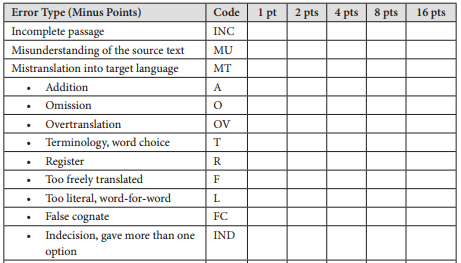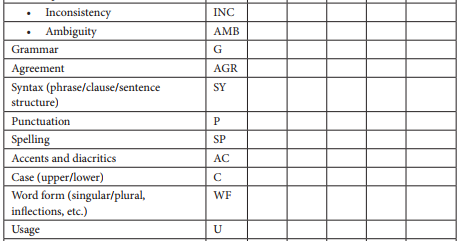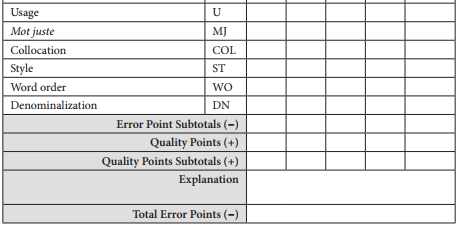- 签证留学 |
- 笔译 |
- 口译
- 求职 |
- 日/韩语 |
- 德语
4. The LISA QA Model is the most complex (and potentially useful) metric for measuring not only translation quality, but also all aspects of the localization process as well. The program, with its accompanying documentation, is now available in Version 3.0. Having recognized the limited value that many paper-oriented standards have in real operational environments, the designers of the metric have, as noted above, configured it as a stand-alone, but integratable, database application for purposes of automating the QA checking and decision-making process.
The LISA model documents a range of critical characteristics that are specific to software products, such as country or locale related items; issues involving document-related components, such as tables of contents, indexes, etc.; layout, sorting rules, typography and character encoding, which are particularly important for non-Latin programming environments; graphics call-outs and captions; and output functions. It provides for end-item inspection criteria having to do with delivery and printing, and views the product in the broader context of documentation functions with respect to terminological usage, GUI and functional consistency, as well as art and design issues.
Like SAE J2450 and the ATA Framework, the LISA QA Model includes some critical characteristics, designed to measure translation quality itself (e.g., grammar, semantics, punctuation, spelling, general style, register, language variants, as well as mistranslation, accuracy, and terminology). The list is certainly more exhaustive than the SAE list, which does not concern itself with elements of style and register, but is neither as complete nor as theoretical as the ATA catalog. It should not be assumed, however, that having an exhaustive list is necessarily a positive factor. The set of criteria selected for any metric should adhere to the "necessary and sufficient" rule in order to assure adequate checking without incurring excessive cost and effort.
Like SAE J2450, the LISA model follows the standard FMEA approach by weighting severity levels in terms of minor, major, and critical errors, although the software also provides for the definition of multiple severity levels according to the needs of a project. As with metrics in general, the stated purpose of the method is to provide a set of formal quantifiable values for assessing localization services, including both translation and formal quality, as well as other project-oriented performance factors.
Table 2. Modified ATA Framework for Error Marking.



责任编辑:admin
